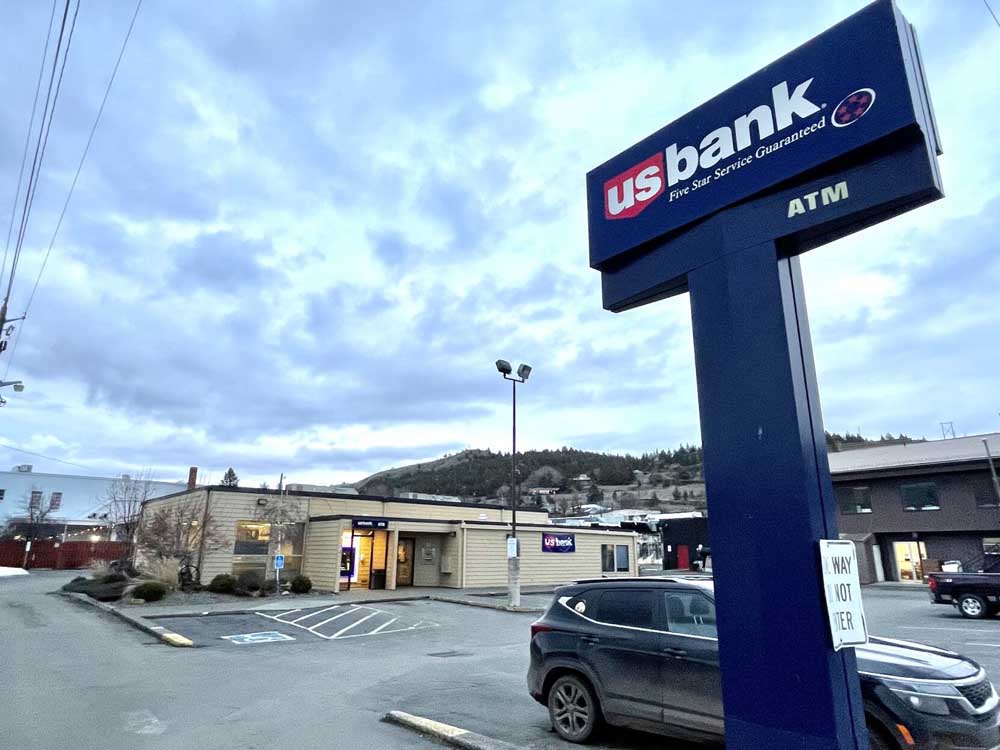Banks have been closing branches at a rapid pace. Here’s how it’s impacting Oregon
Published 7:00 am Monday, April 29, 2024

- The U.S. Bank branch in John Day closed April 30.
Jose Guitron, owner of Jerry’s diner and El Aguila Real in Lakeview, has made a routine of swinging by the U.S. Bank branch across the street from the diner every couple of days to deposit cash and pay bills.
But starting this week, Guitron’s bank runs may take at least two hours to accomplish. That’s because the local U.S. Bank branch in the small southern Oregon town will close. After that, he’ll be facing at least an hour drive, one way, to visit a U.S. Bank branch in Klamath Falls or Alturas, California.
“It would take too much work,” he said, “to go back and forth like this.”
U.S. Bank, which was founded in Oregon in 1891 and was based in Portland until 1997, announced earlier this year that it would close seven branches across the state by the end of April. The bank had previously closed more than 30 branches in Oregon in late 2020 and 2021.
Last year, the bank closed eight branches in the state.
The closures reflect a broader trend in the country’s banking industry. Experts say the number of bank branches has been falling nationwide since the Great Recession, but the trend accelerated after the onset of the coronavirus pandemic.
They say the closures impact small business owners, rural residents and low- to moderate-income communities the most.
From 2013 through 2023, Oregonians have lost more than 350 branches statewide. The drop, from 1,100 to 747, represents a loss of nearly a third of the state’s banking locations, according to The Oregonian/OregonLive’s analysis of federal bank data. Klamath and Grant counties saw the largest declines, with each losing 40% of its branches during the decade. Multnomah, Josephine and Lane counties lost 39% of its branches during the same time period.
Oregon was among the four states that lost the most bank branches between 2019 and mid-2023, according to a February report by the Federal Reserve Bank of Philadelphia. And a 2022 report by the National Community Reinvestment Coalition found that the Portland metro area — which includes Clark County — saw the most bank branch closures of any metro area from 2017 to 2021.
Bank closures have since slowed. Last year, Oregon saw 40 bank branches or credit unions close, a smaller number compared to when the state lost 95 in 2020 and 65 in 2021, according to an analysis of Federal Deposit Insurance Corp. data on commercial banks and credit unions. Meanwhile, openings are a much rarer occurrence: only eight commercial banks and credit unions opened new Oregon locations last year.
Brian Adams, a professor at the University of Portland, said mergers and acquisitions, the rise of online banking, inflation and interest rates have all contributed to the recent closures. He said as more customers shift to online banking and mobile apps to conduct routine banking business, banks might choose to cut costs by closing less profitable branches while still retaining customers through online services.
Jake Holtrop, spokesperson for U.S. Bank, said in an email that the recent closures come in part as a result of changes in “clients’ banking preferences and behaviors,” including a “rapid migration toward digital and mobile banking platforms.”
Despite the rising popularity of online banking platforms, Adams said many communities still rely on brick-and-mortar bank branches for services.
Jennifer White, senior director of consumer ratings group J.D. Power, said studies and surveys conducted by the firm indicate a rise in younger adults going to their local bank branch for help with questions about estate planning, managing debts and paying off student loans.
“There is a resurgence of customers under the age of 40, who truly believe that branches are essential,” White said. “But what they go into the branch for is different today than before. They’re going into the branch to get some form of financial advice or guidance.”
Additionally, many consumers in lower-income and rural areas, as well as older residents and people with disabilities, still prefer to bank with a teller, according to a 2021 survey by the Federal Deposit Insurance Corporation.
“Research shows that those bank branches are really important for small businesses, older adults, low-income and BIPOC communities,” said Carolina Reid, an assistant professor in city and regional planning at the University of California, Berkeley. “We want to make sure that even with the rise of online banking, there is a robust way for those communities to meet their financial needs.”




